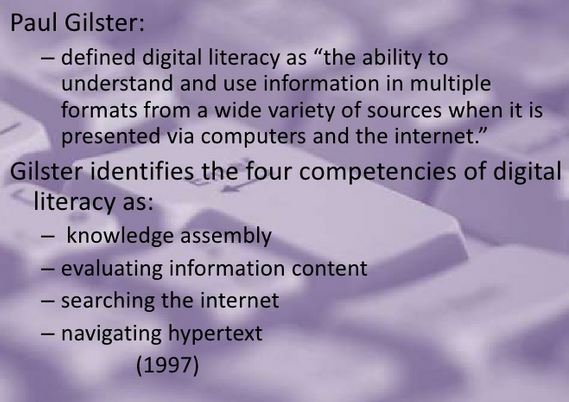Media literacy has come of age. In a society as mass mediated and media
saturated as our own, communication technologies are at the core of the
political, economic and cultural environments.
Yet, how many of us - or our learners - are taught to "read" the media?
How many of us know who makes the decisions about the programs that the
rest of us see or don't see? What will happen to those of us who don't
have access to the latest information technology - to our learners who
can't afford personal computers? To our fellow citizens who can't
afford computer-generated searches and costly information resources? To
our global citizens who are still print illiterate in an age where
competency is based on graphic read-outs fed across the world through
instantaneous integrated digital networks?
Media literacy allows learners to draw on their experience of media
forms and connect it to classroom activities. Research shows that when
students are engaged in their topic, and can actively connect it to the
real world, they are more excited and engaged in learning (Hobbs, 2006).
Little research has been conducted on whether or not media literacy may
have an impact on school attendance and quality of class participation.
Media literacy can be especially powerful for youth who do not
perform well in the school system. Kist (2005) found that "at risk" and
marginalized youth became excited and engaged with reading and writing
after their experience with media literacy in the classroom (p. 103).
Media literate teenagers are more likely to recognize what Goodman
(2003) calls “the cultural triangle of fashion, sports and music” (p.
27) created and promoted by the entertainment industry. By learning to
analyze and critique commercial media representations of their own
experiences of marginalization and rebellion, poor and minority youth
become capable of adopting roles other than those of consumers or
criminals (Goodman, 2003). Instead, as media producers, they are
empowered to join mainstream society’s discourse by speaking with a
voice of their own.
In addition to joining the public discourse, the voices of inner city
youth challenge it. According to Goodman, (2003), "Their observations
and insights can serve to challenge adult perceptions of teens as
hostile and threatening, and also bring diversity to the voices
informing public policy" (Cahill, 1997, as sited in Goodman, 2003, p.
30)
Along the same line, media education can help teachers to build better
relationship with students. Students connect themselves more with the
topics covered in Media/Communication class than what they learn in
other traditional academic courses.
To us teachers also get to learn more
about their students, as students give unpredictable and original
responses regarding various topics. Also students express confidence that media messages have clear primary
meanings and sources that can be easily identified, media literacy
demands nuanced thinking about message creators as well as their goals
and values.
i agree with the presenter http://www.medialit.org/reading-room/10-benefits-media-literacy-education that presents the ten benefits of media literacy.
regarding the curriculum i have also learnt that media literacy needs to be incporated into our curricula.
http://www.projectlooksharp.org/12BasicWays.pdf
and using media as a standard pedagogical tool by designing assignments that require use of more than one media source and comparing different outcomes of the sources.
i have found lots of good content on media literacy that will enhance my understanding
in professional learning development
https://www.pinterest.com/pin/11751649005609432/
Niwamanya Gilbert
A/g of Plumbing and Sheet metal
Nakawa Vocational Training Institute-Uganda
i agree with the presenter http://www.medialit.org/reading-room/10-benefits-media-literacy-education that presents the ten benefits of media literacy.
regarding the curriculum i have also learnt that media literacy needs to be incporated into our curricula.
http://www.projectlooksharp.org/12BasicWays.pdf
and using media as a standard pedagogical tool by designing assignments that require use of more than one media source and comparing different outcomes of the sources.
i have found lots of good content on media literacy that will enhance my understanding
in professional learning development
https://www.pinterest.com/pin/11751649005609432/
Niwamanya Gilbert
A/g of Plumbing and Sheet metal
Nakawa Vocational Training Institute-Uganda










